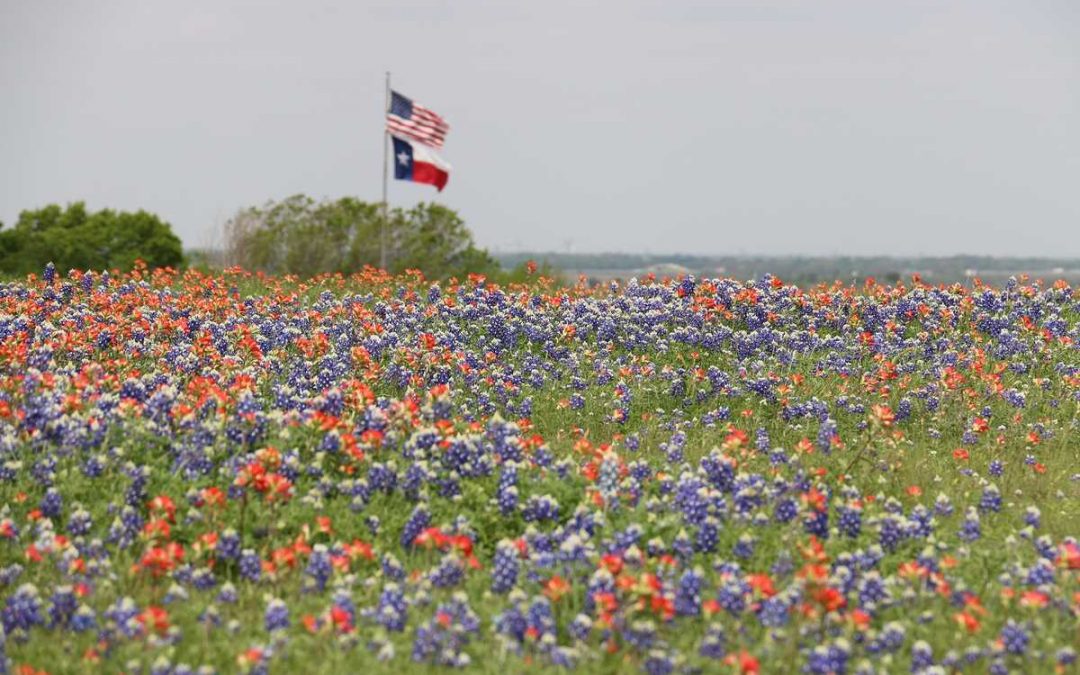Dallas is home to over 350 parks and 160 miles of nature trails. Residents love the outdoors, stopping by famous food trucks at Klyde Warren Park after a relaxing afternoon strolling around Lady Bird Johnson Wildflower Center or White Rock Lake. It is easy to invite some Texas nature into your landscape design by filling your yard with Dallas-native plants.
Native plants offer many landscaping benefits, including:
- Native plants support a diverse ecosystem, providing food and shelter for local wildlife, birds, and insects.
- They are acclimated to the dry climate and require less water.
- They are low-maintenance, surviving potential Texas frost, local insects, and disease.
Native plants help promote a healthier Texas ecosystem. Check out these 11 native plants for Dallas to help you plan your new backyard oasis.
In this article, we’ll cover:
- 11 Native Plants for Your Dallas Yard
- How to Choose Native Plants for Your Dallas Landscape
- FAQ About Native Dallas Plants
- Where to Find Native Plants in Dallas
11 Native Plants for Your Dallas Yard
1. Texas Bluebonnet (Lupinus texensis)
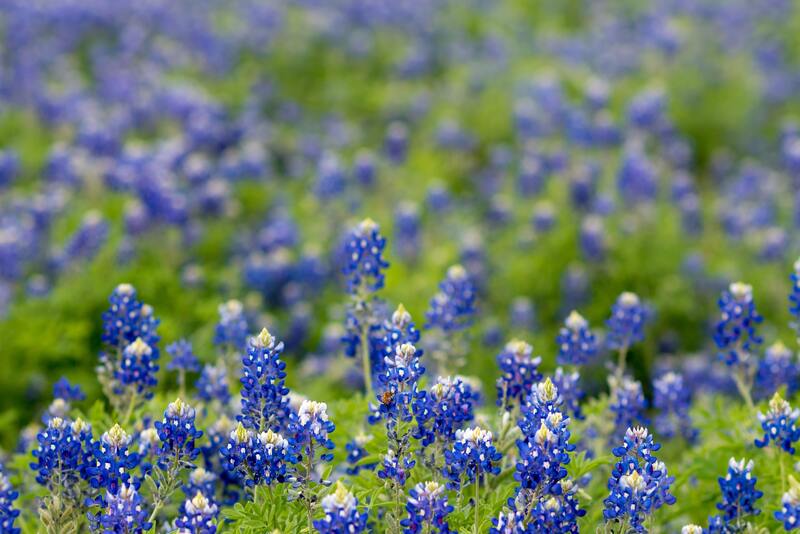
Bluebonnets
Photo Credit: Pexels
If you have ever driven down a Texas highway and seen families posing amongst wildflowers, chances are good it was a field of bluebonnets. Texas bluebonnet is a native Texas annual and the state flower of Texas. Violet-blue flowers protrude in densely packed clusters from a central spike with a white tip inviting beneficial pollinators like butterflies and moths to your garden.
Bluebonnets thrive in the Texas spring, blooming from March to May. These pretty wildflowers make great additions to hanging baskets, planters, flower beds, and more. They prefer well-drained, loose soil and are a fan of full sun and minimal water.
Growth habit: Flower
Mature size: 12-24 inches tall
Duration: Annual
Foliage: N/A
Sunlight needs: Full sun
Soil preferences: Prefers sloped, well-draining alkaline soil
Water needs: Drought-tolerant, prefers to dry out between waterings
Potential hazards: Toxic to humans and animals if ingested
2. Prairie Verbena (Glandularia bipinnatifida)
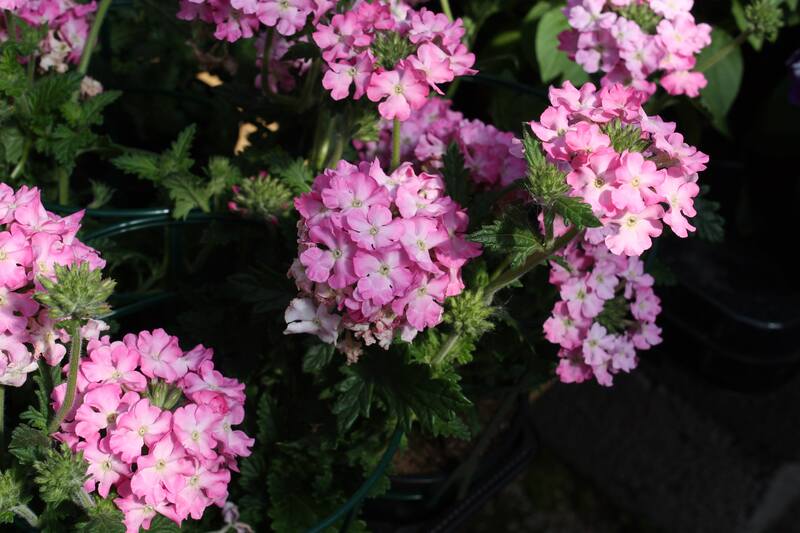
Prairie Verbena
Photo Credit: Anneli Salo / Wikimedia Commons / CC BY-SA 3.0
Prairie Verbena, or “Little Purple One,” is another highway beauty and Texas wildflower growing in grassy prairies. It is a short flower with a long blooming season from March to October. Purple flowers bloom in clusters of five amongst medium-green leaves.
Prairie verbenas work great in low-maintenance Dallas landscaping thanks to their low irrigation needs. The “Little Purple One” attracts pollinators like butterflies and bees and is deer-resistant.
Growth habit: Flower
Mature size: 1 foot
Duration: Perennial
Foliage: N/A
Sunlight needs: Full sun to partial shade
Soil preferences: Adaptable; prefers well-drained soil
Water needs: Drought-tolerant; may need weekly watering during extreme dry spells
Potential hazards: Non-toxic; no safety hazards
3. Coral Honeysuckle (Lonicera sempervirens)
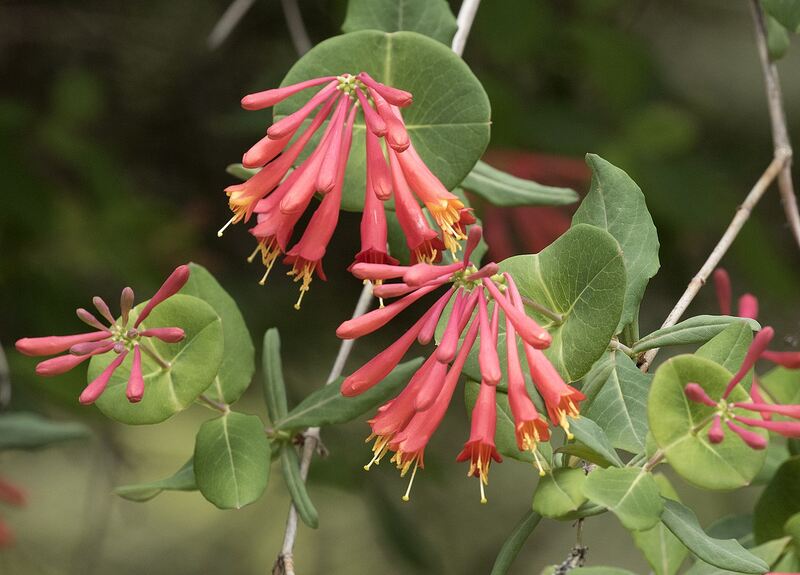
Coral Honeysuckle
Photo Credit: Zeynel Cebeci / Wikimedia Commons / CC BY-SA 4.0
Often found climbing the woods and stream banks lining Dallas trails, coral honeysuckle is an evergreen clumping vine. In Texas landscaping, you can find it crawling across flower beds or along trellises, walls, and fences.
The dark, shiny leaves give way to trumpet-shaped red-orange flower clusters from spring to fall, and the vine produces clusters of bright red berries from September to October. Coral honeysuckle attracts hummingbirds and other pollinators thanks to its vibrant flowers and fruit.
Growth habit: Vine
Mature size: 3-18 feet
Duration: Perennial
Foliage: Evergreen to semi-evergreen
Sunlight needs: Full sun to partial shade
Soil preferences: Adaptable; prefers well-drained soil
Water needs: Needs about 1 inch of water per week, including rainfall (may need weekly watering during dry spells
Potential hazards: Toxic to humans and animals if ingested
4. Cenizo (Leucophyllum frutescens)
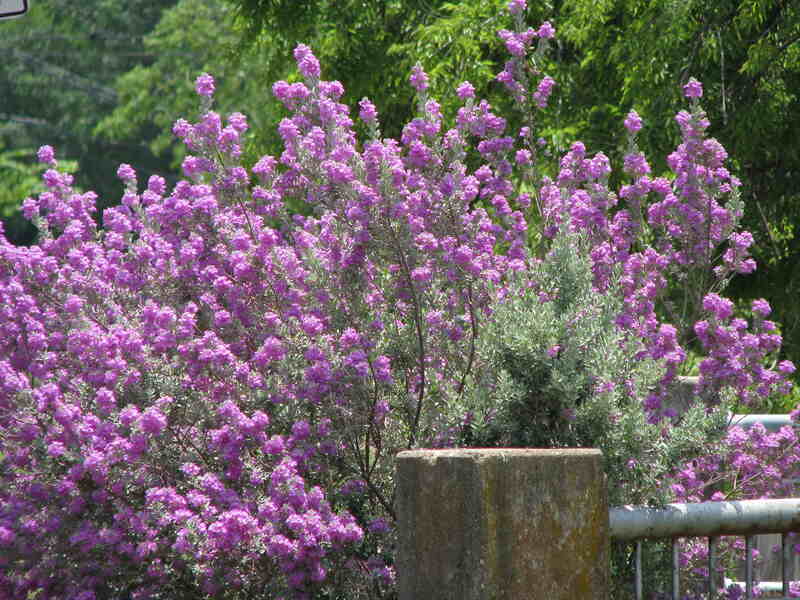
Cenizo
Photo Credit: micklpickl / Flickr / CC BY-SA 2.0
Cenizo, or Texas sage, is a flowering shrub that loves dry conditions and is extremely heat-tolerant. It prefers full sun and comes in a variety of colors. The low-maintenance perennial does not respond well to pruning, making it a great low-maintenance option. Most Texas sage shrubs are gray-green with light purple flowers that bloom from spring to fall.
Growth habit: Shrub
Mature size: 8 feet tall
Duration: Perennial
Foliage: N/A
Sunlight needs: Full sun
Soil preferences: Prefers well-drained alkaline soil
Water needs: Drought-tolerant; low watering needs
Potential hazards: Non-toxic; no safety hazards
5. Scarlet Sage (Salvia coccinea)
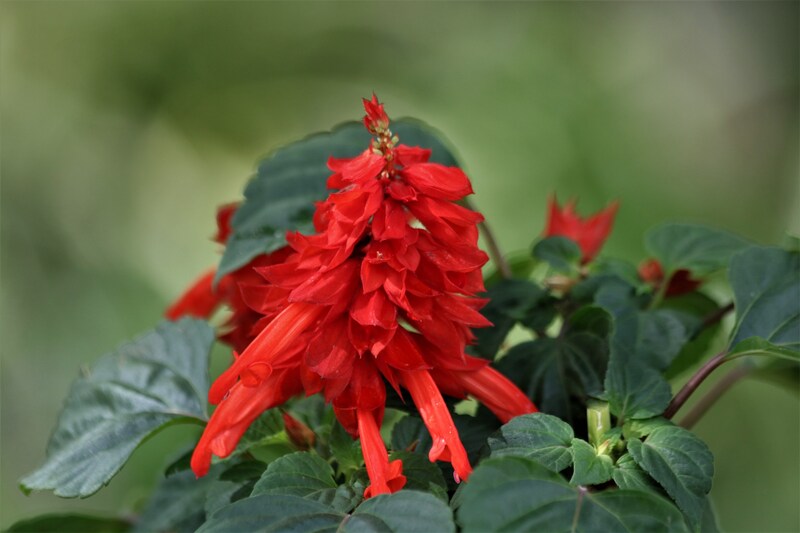
Scarlet Sage
Photo Credit: PublicDomainPictures
Scarlet sage is another deer-resistant plant for your Dallas landscape. Hummingbirds and butterflies love the bright red tubular flowers set in whorls around a center stem. This herbaceous perennial blooms from July to October and most reseeds in frost-free areas. Interestingly, it is the only U.S. native sage with red flowers.
Growth habit: Flower subshrub
Mature size: 1-3 feet tall and 1-3 feet wide
Duration: Annual, sometimes perennial
Foliage: N/A
Sunlight needs: Full sun to partial shade
Soil preferences: Prefers well-drained sandy soil or gravel
Water needs: Drought-tolerant; may need weekly watering during extreme dry spells
Potential hazards: Low toxicity if ingested, not considered poisonous to animals
6. Pavonia (Pavonia lasiopetala)
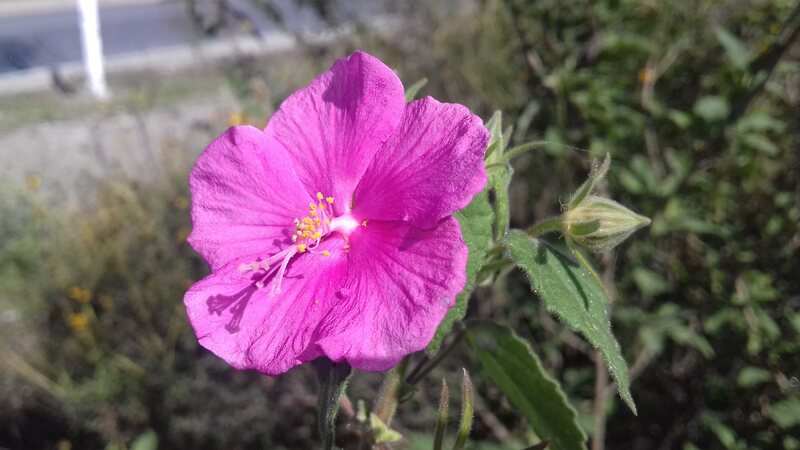
Pavonia
Photo Credit: Pxhere
Pavonia, or rock rose, loves well-draining rocky soil but adapts well to Texas homes and landscapes. It is a versatile shrub with a long blooming period that grows well in full sun or partial shade.
The low-maintenance shrub loves dry conditions, reducing irrigation needs. It has a woody base with light green heart-shaped leaves and small pink flowers resembling hibiscus blooms. Rock roses tolerate frequent pruning to promote fresh growth and attract pollinators.
Growth habit: Shrub
Mature size: 1.5-4 feet tall and 3 feet wide
Duration: Perennial
Foliage: Deciduous to semi-evergreen
Sunlight needs: Full sun to partial shade
Soil preferences: Prefers well-drained sandy, loam, or limestone soil
Water needs: Drought-tolerant with low watering requirements
Potential hazards: Non-toxic; no safety hazards
7. Turk’s Cap (Malvaviscus drummondii)
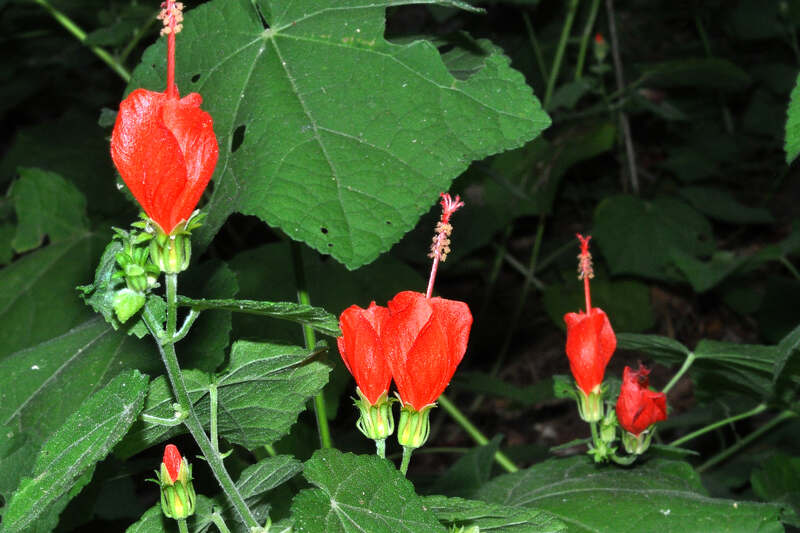
Turk’s Cap
Photo Credit: William Farr / Wikimedia Commons / CC BY-SA 4.0
North Texas favorite, Turk’s cap, is a versatile flowering shrub found in many habitats. It tolerates a wide spectrum of sunlight availability, including full sun to full shade. The bright red flowers never fully open and resemble upside-down turbans.
Hummingbirds love the flowers and mealy fruit produced by Turk’s cap, and the plants are crucial to their migration. The perennial blooms from mid-summer into fall.
Growth habit: Small to medium shrub
Mature size: 2-3 feet tall and 3-5 feet wide, can reach up to 9 feet tall
Duration: Perennial
Foliage: Deciduous, semi-evergreen, or evergreen depending on location
Sunlight needs: Full sun to shade, prefers partial shade
Soil preferences: Adaptable; prefers well-drained, moist soil of sand, loam, clay, or limestone
Water needs: Drought-tolerant; requires weekly watering during extreme dry periods
Potential hazards: Non-toxic; fruit and flowers are edible and used for medicinal purposes throughout Mexico
8. Wine Cup (Callirhoe involucrata)
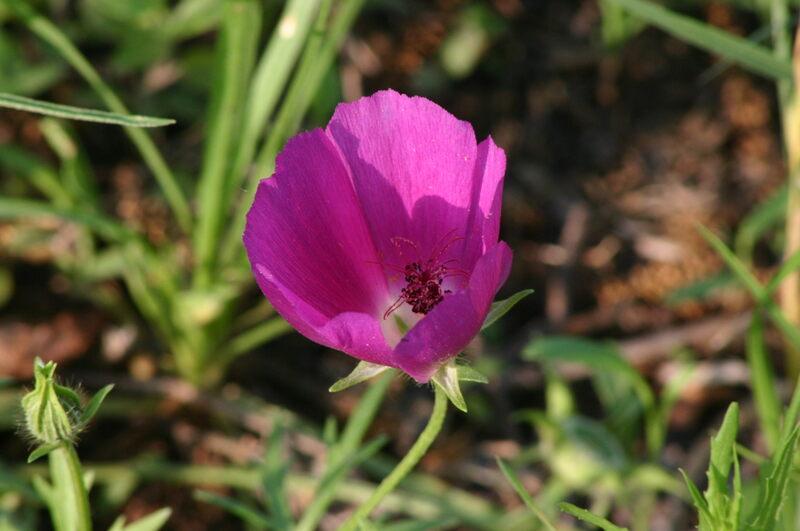
Wine cup
Photo Credit: Wing-Chi Poon / Wikimedia Commons / CC BY-SA 3.0
Wine cup is a flowering vine used as ground cover in rock gardens and flower beds. The drought-tolerant perennial also grows well in containers and hanging baskets where it cascades over the edge. Wine cups require frequent pruning to promote growth.
Its unique blooms close each evening, and the dark purple, wine-colored flowers bloom from March to June. The flowering vine goes dormant during hot summers and needs well-drained soil. Wine cups attract butterflies and are the larval host plant for gray hairstreak butterflies in the Fort Worth area.
Growth habit: Flowering vine
Mature size: 8-12 inches tall and 3 feet wide
Duration: Perennial
Foliage: N/A
Sunlight needs: Full sun to partial shade
Soil preferences: Prefers well-drained sandy or rocky soil
Water needs: Drought-tolerant; prefers regular moisture
Potential hazards: Non-toxic; no safety hazards
9. Cedar Sedge (Carex planostachys)
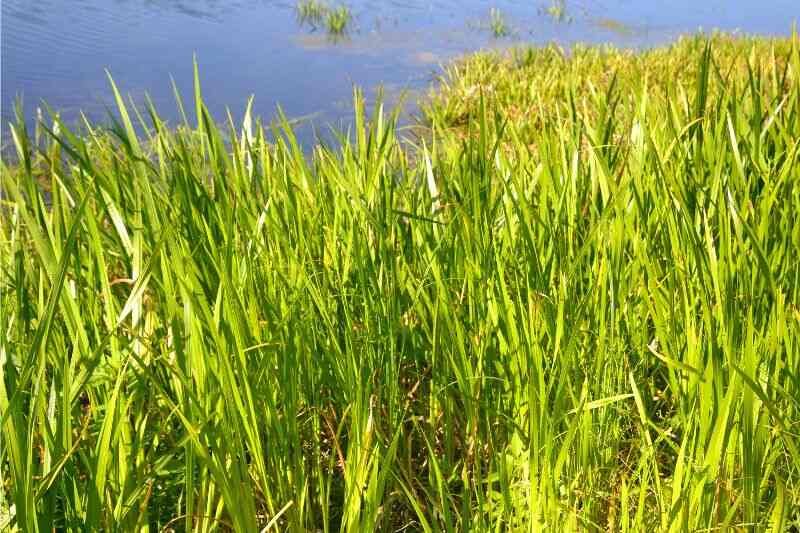
Cedar sedge
Photo Credit: konstantniks / Canva Pro / License
Cedar sedge is an ornamental grass found in many Texas landscapes. The clumping grass loves well-drained soil with partial shade. It tolerates light foot traffic and requires infrequent mowing. The perennial is often used as ornamental ground cover and accent plants.
Growth habit: Ornamental grass
Mature size: 6 inches tall
Duration: Perennial
Foliage: N/A
Sunlight needs: Partial shade
Soil preferences: Adaptable; prefers well-drained soil
Water needs: Drought-tolerant; low watering needs
Potential hazards: Non-toxic; no safety hazards
10. Golden Groundsel (Packera aurea)
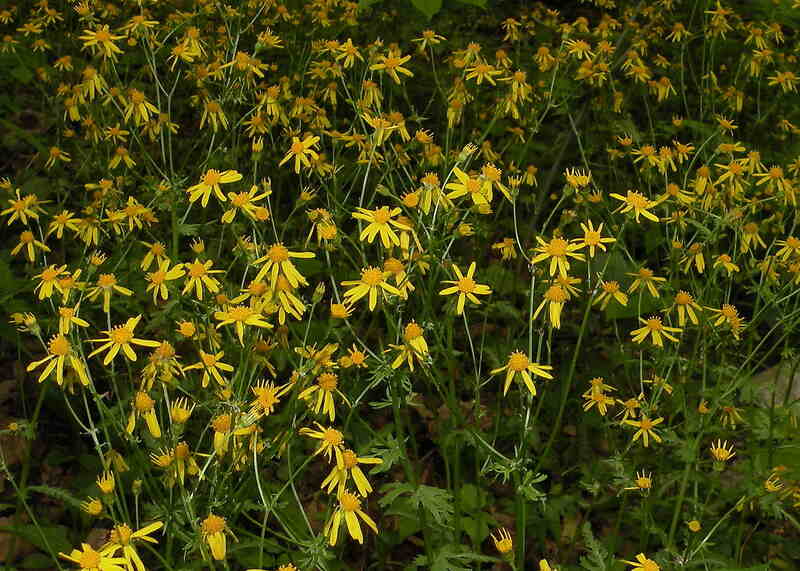
Golden Groundsel
Photo Credit: Doug McGrady / Flickr / CC BY 2.0
Golden groundsel, commonly known as golden ragwort, is a crawling ground cover with bright yellow, daisy-like flowers and heart-shaped foliage. The perennial blooms from April to June in North Texas and the semi-evergreen plant typically survives the winter.
Golden groundsel loves shade and is deer-resistant. Its golden blooms attract beneficial pollinators, supporting a diverse ecosystem.
Growth habit: Ground cover
Mature size: 1-2 feet tall and 1 foot wide
Duration: Perennial
Foliage: Semi-evergreen
Sunlight needs: Partial shade to full shade
Soil preferences: Adaptable; prefers well-drained soil
Water needs: Low to moderate
Potential hazards: Low toxicity to humans or animals if touched or ingested
11. Mexican Plum (Prunus mexicana)
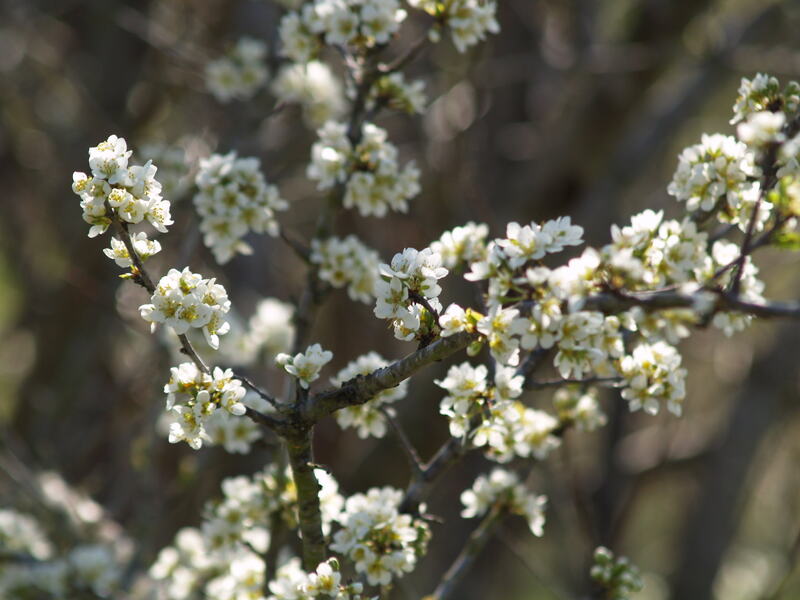
Mexican Plum
Photo Credit: Charles Willgren / Flickr / CC BY 2.0
Mexican Plum is a popular landscaping tree in Dallas. It is the first tree to bloom in March, signaling to all Texans spring has arrived. The small- to medium-sized tree has peeling, striated bark and clusters of fragrant white flowers. Purple fruit ripens in the fall and is enjoyed by humans and animals alike.
The small fruit tree is drought-tolerant and a favorite amongst texas pollinators. The sprawling branches make the Mexican plum a magnificent shade tree to add to your landscape.
Growth habit: Tree
Mature size: 15-30 feet tall and 10-20 feet wide
Duration: Perennial
Foliage: Deciduous
Sunlight needs: Full sun to partial shade
Soil preferences: Adaptable; prefers well-drained soil
Water needs: Drought-tolerant with medium-low water requirements
Potential hazards: Non-toxic; no safety hazards
How to Choose Native Plants for Your Dallas Yard
All native plants have specific needs, and not all native plants will grow well in your yard. Be sure to select plants suitable for the soil, sun exposure, and watering capabilities of your landscape.
Dallas-Fort Worth sits in USDA Hardiness Zone 8, indicating the coldest annual temperature is 10 to 20 degrees Fahrenheit. Texas native plants are cold-hardy to the minimum temperature in Dallas’ hardiness zone. Keep your zone in mind when selecting non-native plants for your landscape.
FAQ About Native Dallas Plants
When should I plant native flowers and shrubs in Dallas?
Most flowers and shrubs should be planted after the last frost in late March. Check your local weather forecast before introducing new plants to your yard.
Why are native plants important?
Native plants support the Texas ecosystem. They support beneficial insects like butterflies, bees, and birds. They are drought tolerant and adapted to the clay soil found in most Texas yards, making them easier to grow and more beneficial to the local environment.
When should I water my native plants?
Early morning or evening are the best times to water your native plants. Winds are calmer and temperatures are lower, so there is less risk of water loss from evaporation or scorching from the sun. Additionally, foliage needs time to dry before nightfall. Wet foliage can lead to disease and rot.
Where to Find Native Plants in Dallas
Chances are good you already have native plants in your yard or around your neighborhood. If you want to introduce more plants into your Dallas landscape, be sure to source your plants ethically and never transplant them from the wild.
Check out these local nurseries in the Dallas area recommended by the Native Plant Society of Texas:
- Bruce Miller Nurseries
- Fannin Tree Farm
- Meador’s Garden Center
- Weston Gardens
Filling your yard with native plants is only one step in your landscaping design project. Be sure to consider other low-maintenance landscaping ideas to complement your new native plants and check out the best grass types for Dallas for a healthy lawn.
When you are ready to turn over the hard work and lawn upkeep to a professional, let wiikilawn connect you with a local landscaping pro in your area.
Main Image Credit: Pixabay

